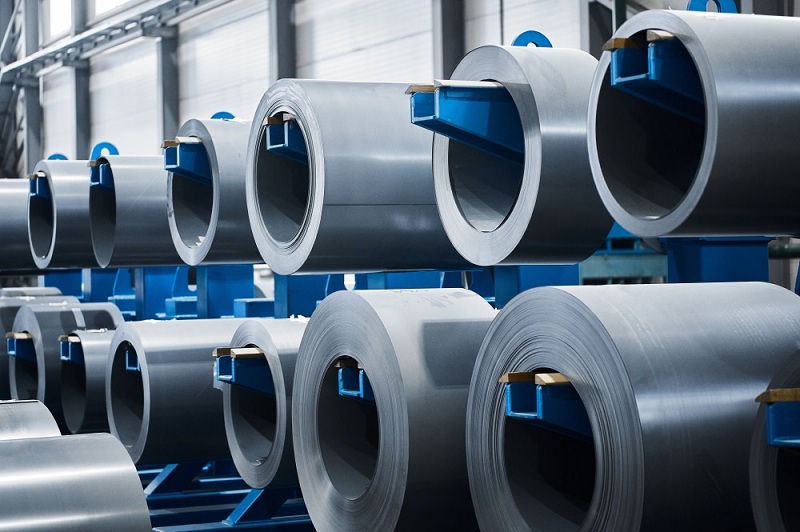
We are often asked what the difference is between hot-rolled steel and cold-rolled steel, and the short answer is during processing. They are actually two different types of metals, and there are fundamental differences in the way they are manufactured.
Hot-rolled steel plates are produced at high temperatures, usually at temperatures above 1000 degrees Celsius; Cold-rolled steel is produced at room temperature. In terms of surface finish, because the hot rolled steel plate is produced at high temperature, the surface is rough and there are defects such as oxide skin. The surface of the cold-rolled steel plate is relatively smooth, without defects such as oxide skin. Due to different production processes, the mechanical properties of hot-rolled steel plates and cold-rolled steel plates are also different. Generally speaking, the strength and toughness of hot-rolled steel plates are high, but the plasticity is poor; The cold-rolled steel plate has better plasticity, but the strength and toughness are relatively low. Due to the differences in mechanical properties and surface finish, hot-rolled steel plates and cold-rolled steel plates are also different in the use of occasions. Hot rolled steel plate is usually used in heavy duty structures, pressure vessels and other fields; The cold-rolled steel plate is suitable for automobiles, home appliances, construction and other fields.
In addition, the mechanical properties of hot-rolled steel plates are better than those of cold-rolled steel plates, especially in terms of strength and plasticity. Because the hot rolled steel plate requires high temperature during processing, its grain size is also larger and its crystal structure is more loose, which makes it have better toughness and plasticity. The cold-rolled steel plate is processed at room temperature, the grain size is smaller, the crystal structure is more compact, so its strength and hardness are higher.

Appearance and surface quality because the cold plate is obtained after the hot plate in the cold rolling process, and the cold rolling will also carry out some surface finishing, so the cold plate in the surface quality (such as surface roughness, etc.) is better than the hot plate, so if there are high requirements for the coating quality of the product, such as painting, the general choice of cold plate. In addition, the hot plate is divided into pickling plate and unpickling plate, pickling plate surface due to pickling so normal metal color, but not cold rolled so the surface is not cold plate height, unpickling plate usually has an oxide layer on the surface with, hair, or there is iron oxide black layer. Under normal circumstances, the mechanical properties of the hot plate and the cold plate in the project are considered to be no difference, although the cold plate in the cold rolling process there is a certain work hardening, (but do not rule out the mechanical properties of strict requirements, it needs to be treated differently), the cold plate is usually slightly higher than the yield strength of the hot plate, the surface hardness is also higher. The hot rolling process is to roll the steel plate into a relatively thin steel plate at a higher temperature; Cold rolling is the rolling of steel plates under normal temperature conditions. Generally, hot rolling is carried out first, and then cold rolling. If the steel plate is thicker, it can only be hot rolled, and then cold rolled after rolling into a thinner plate. Hot rolled steel plate is divided into thick plate (thickness greater than 4mm) and thin plate (thickness 0.35~4mm) two kinds; There is only one kind of cold rolled steel plate (thickness 0.2 ~ 4mm). The termination temperature of hot rolling is generally 800 ~ 900 ° C, and then it is generally cooled in the air, so the hot rolling state is equivalent to normalizing treatment. The metal material delivered in hot rolled condition has certain corrosion resistance because the surface is covered with an oxide film.
In general, hot-rolled steel plates and cold-rolled steel plates have their advantages and disadvantages, and appropriate materials should be selected according to specific needs. If you need a material with high strength and plasticity, you should choose a hot-rolled steel plate; If a material with a higher surface finish is required, cold-rolled steel plates should be selected. Of course, in the selection of steel plate also need to take into account the cost, production efficiency and other factors.
Hongwang’s exclusive brushing process technology
2023-02-09Popular Material For Straps - Stainless Steel Material
2022-08-29Classification and selection of color stainless steel screens
2021-06-24What are the performance indicators of silicon steel sheet? You need to know these standards!
2022-09-28List of Imports&Exports of Stainless Steel and Raw Materials in October
2020-11-27Application Prospects of Flexible Cores in Special Transformers
2025-01-03






